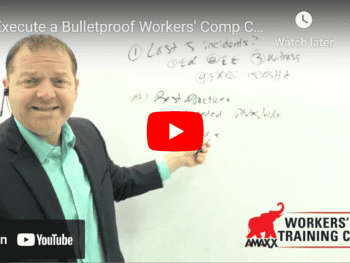Effectively monitoring and handling litigation costs is an important role for each member of the claims management team. This is because once a matter is placed into litigation, a level of uncertainty arises. This not only includes unforeseen costs and expenditures but the possibility of an unexpected outcome if the case goes to a hearing. Failure to properly analyze a claim can lead to excessive and added costs to any workers’ compensation program.
Setting the Stage via Claim Analysis
Roughly 98% of all workers’ compensation cases settle without the need to go to a formal hearing. Of the remaining claims, defense counsel will litigate and hopefully reach a favorable result for the employer and insurer. While every case sent to counsel for defense is evaluated, it is crucial to ensure the claim receive the proper attention and analysis so excessive costs and be avoided in the long run.
Click Link to Access Free PDF Download
“13 Research Studies to Prove Value of Return-to-Work Program & Gain Stakeholder Buy-In”
Effective claims analysis starts with a diligent investigation that immediately after the work injury. Members of the claims management team need to take part in this investigation by understanding what questions need to be asked and how to handle the collection of evidence. It is also essential to train all employer representatives on completing the proper forms and evaluating the Average Weekly Wage of the employee to avoid costly mistakes.
Providing Proper Direction for the Defense Attorney
This step in the process goes beyond selecting the correct defense counsel to refer a claim. Several steps need to occur beforehand to ensure the claim is given the proper analysis along with the development of the appropriate strategy. Additional steps need to take place internally to vet cases and make sure claims are sent to defense counsel for handling.
Once the case is referred for defense, the individual claim handler should ensure proper procedures are followed. Items to consider include:
- Drafting a coherent claim referral letter to counsel outlining the known facts of the claim and possible defenses;
- Outline the objectives of the file referral and what the best outcome would be on the matter;
- Ensure the preservation of confidentiality and other potential conflicts of interests in the tripartite relationship with the insured; and
- Reiterate claim handling guidelines, and expectations should the file be selected for audit.
Developing a Comprehensive Defense Plan
The best defense council relationship is one where the attorney acts a fiduciary, meaning your best interests are put first. A good working relationship will develop with the claims management team and defense counsel to coordinate the defense of a file. This goes beyond making sure that attorney understands the expectations on a file. Establish the rules of engagement with a new attorney relationship to avoid confusion down the road.
- Status Reports: Establish a reasonable frequency for status reports from defense counsel. Each report should include information on what events took place during the reporting period, how that information impacts their analysis and what to expect.
- Exposure Analysis: Understand the nature and extent of all claim issues. This allows members of the claims management team to set reserves accurately. Failure to do so can result in losses to a workers’ compensation program and the inability to settle cases with efficiency.
- File Reviews: Holding consistent file reviews will allow for the claims handler, defense counsel and other interested stakeholders to discuss important cases and plan accordingly. It can also be used to identify trends and address important developments.
Conclusions
Running an efficient workers’ compensation program requires the engagement of the claims management team, defense counsel and other interested stakeholders to use scarce resources effectively. This can be accomplished through the development of a litigation plan on each case. The benefit of implementing such successful programs is settling and cost-effectively winning more cases.

Author Michael Stack, CEO Amaxx LLC. He is an expert in workers’ compensation cost containment systems and helps employers reduce their workers’ comp costs by 20% to 50%. He works as a consultant to large and mid-market clients, is a co-author of Your Ultimate Guide To Mastering Workers Comp Costs, a comprehensive step-by-step manual of cost containment strategies based on hands-on field experience, and is founder & lead trainer of Amaxx Workers’ Comp Training Center.
Contact: mstack@reduceyourworkerscomp.com.
Workers’ Comp Roundup Blog: https://blog.reduceyourworkerscomp.com/
©2018 Amaxx LLC. All rights reserved under International Copyright Law.
Do not use this information without independent verification. All state laws vary. You should consult with your insurance broker, attorney, or qualified professional.














